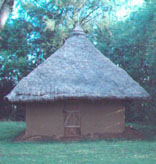11/19/2003


WECHE MOKADHO
JEXJALUO ****
;
P.O. Box 58972
00200 City Square
Nairobi
Kenya
13th November 2003
NBK MAKES IMPRESSIVE PROFIT
My attention is drawn to the announcement of National
Bank of Kenya’s financial report and accounts for the
nine months to September 2003 covered in the Daily
Nation of 12th November 2003 under the headline “NBK
makes impressive profit”. The beleaguered National
Bank of Kenya (NBK), does indeed firmly appear on the
road to recovery after announcing an after tax profit
of Kenya Shillings 399,000,000 (approximately US $
5,320,000), for the nine months to September 2003.
This is commendable considering that interest rates on
government treasury bills, the main investment avenue
for banks in Kenya over the past eleven years, have
drastically come down in the year 2003, and
considering that NBK’s situation was so precarious
following wanton plunder, that it forced the
government to inject capital of US $ 26,000,000 in
November 1998 to keep it afloat. This should certainly
serve as inspiration to indigenous banks in Kenya.
There however appears to be a lot of intrigue
surrounding NBK, and it is necessary that this is
cleared. The announcement of NBK’s results as carried
in the Daily Nation of 12th November 2003 roughly
indicate that NBK’s liabilities with the Central Bank
of Kenya (CBK), have now reduced from KShs. 6 billion
at the end of the 2002 financial year to KShs. 2.9
billion at the end of the third quarter to September
2003. The same report states that the government still
owed NBK a total sum of more than KShs. 10 billion.
The figure for non-performing loans and advances
increased slightly to KShs. 15.9 billion by the end of
September from KShs. 14.8 billion realised over the
same period last year.
From a layman’s point of view, if all the attached
figures were to be balanced out, then National Bank of
Kenya is a solvent bank. However, the Daily Nation’s
“Business Week” of 4th November 2003 ( see
http://www.nationaudio.com/News/DailyNation/Supplements/bw/04112003/story04114.htm),
states that the World Bank views NBK as "illiquid and
deeply insolvent". In the same article, the World Bank
urges the government to quickly institute sweeping
reforms towards ensuring that NBK is “quickly
privatised by sale of state-owned shares to new
multilateral or developmental investors capable of
providing good governance and strategic direction to
the bank”.
Two contradictions here are immediately noted.
Firstly, National Bank of Kenya has been brought back
to life by a distinguished team of indigenous managers
and there is therefore no need for “multilateral good
governance”, and secondly, if National Bank of Kenya
is "illiquid and deeply insolvent", as the World Bank
puts it, then no “multilateral or developmental
investors” would want to have any dealings with it,
and NBK should therefore be liquidated for the common
good.
It appears that the World Bank is fronting for a
select consortium of foreign businessmen interested in
acquiring a controlling stake in National Bank of
Kenya and indeed Kenya Commercial Bank (KCB). The
government also needs to explain why it has not
settled it’s debt of US $ 133,000,000 to the National
Bank of Kenya despite making a pledge to do so in
April this year. The cabinet has so far resolved to
convert a huge outstanding loan owed by the giant
Kenya Power and Lighting Company (KPLC) to the Kenya
Electricity Generating Company (KENGEN), into equity,
and injected a sum of US $ 26,000,000 in the state
owned National Housing Corporation (NHC). There has
been however no further mention of NBK from the
cabinet.
Over and above, it appears that literally all state
owned firms have been targeted for strategic takeovers
by World Bank and IMF fronted business consortiums as
a condition for sustained donor funding, and the
government needs to clarify this and dispel
speculation.
Michael Mundia Kamau
Ka in gi mari moro ma di wandik ka to
orni
Akelo nyar Kager
jaluo@jaluo.com
Daher winjo dwondi in bende,
iwinjo?
Inyalo oro twak kod weche manyien ne: Mig. Ajos wuod Atiga
WuonAbila@jaluo.com
GALAMORO : Riwruok mar JOLUO e Piny Ngima, orwaku uduto mondo ubed e kanyakla mar burani. Ornwa nyingi gi nondi kaka obedo. Riwruok e teko joka Nyanam.
